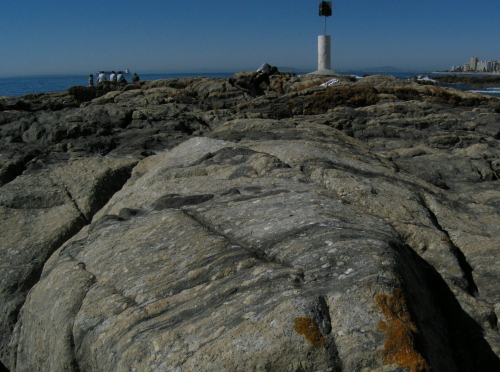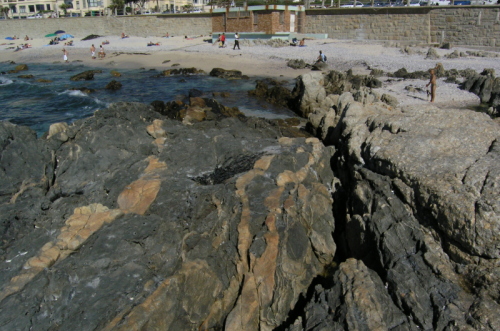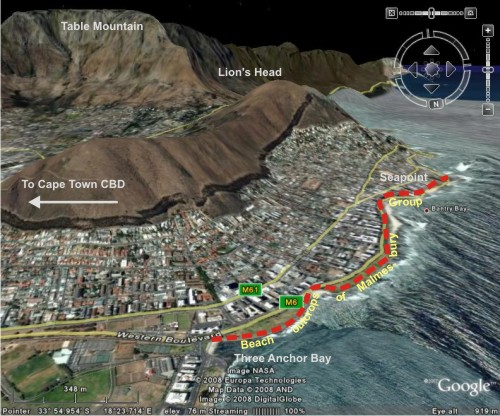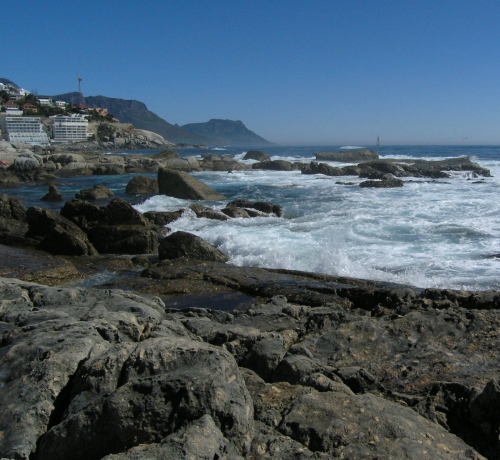In a previous installment, my intrepid wander along the Capetonian seafront ended at Seapoint, where slightly metamorphosed sediments of the Malmesbury group come into contact with the intrusive Cape Granite. In the photo I showed you then, the contact appeared to be fairly sharp.

However, if you look closely at the foreground of the photo above, you can see lenses of much darker material within the pale granite. These are actually bits of the Malmesbury Group sediments, completely surrounded, and incorporated within, the granite. The contact at Seapoint is actually anything but sharp; instead, over a hundred metres or so of the shoreline you can walk across a beautifully exposed example of a gradational contact. Starting on obvious outcrops of the Malmesbury group and heading east, first you see distinct veins of granite being intruded into the sediments:









Nice plan for content warnings on Mastodon and the Fediverse. Now you need a Mastodon/Fediverse button on this blog.